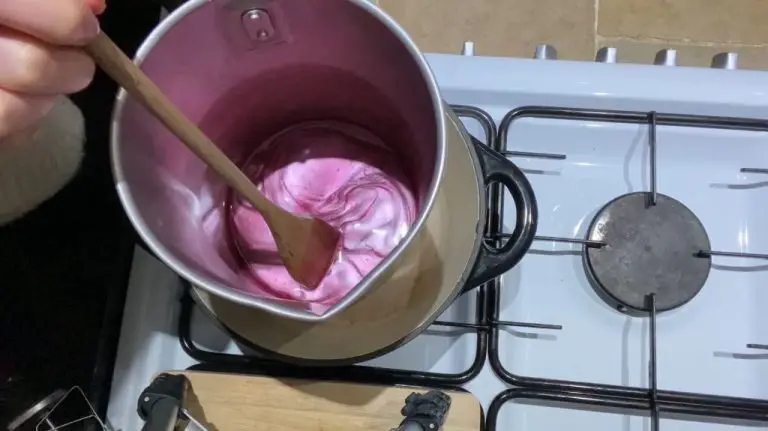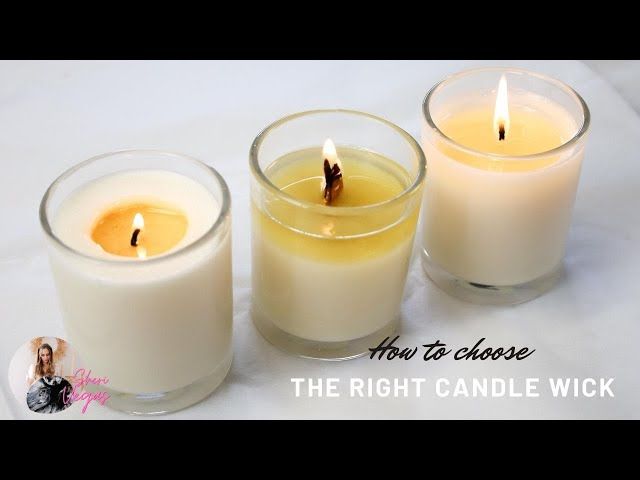Are Homemade Candles Worth It?
Making homemade candles can be a fun and rewarding hobby that allows you to create customized candles in your favorite scents and containers. However, there are various costs and benefits associated with making candles yourself versus purchasing pre-made ones. This article will provide an overview of homemade candle making and analyze the pros and cons to help you decide if it’s worth investing your time and money into.
Cost Savings
The costs of store-bought versus homemade candles can vary quite a bit depending on factors like size, wax type, fragrance, and more. However, most sources agree that homemade candles are significantly cheaper per candle compared to purchasing pre-made candles from stores.
For example, according to one analysis by Selkie Traveller, making homemade candles saves around 62% of the money spent to buy candles online or in stores for an entire year. They estimate that store-bought candles cost around $20 each on average, while homemade candles using standard supplies cost around $4 per candle (Selkie Traveller, 2022).

Reddit users on r/candlemaking also agree it’s cheaper to make your own. They estimate store-bought candles at $20 versus only $4 in supplies per homemade candle of similar size (Reddit, 2022). The main costs for homemade candles are wax, wicks, fragrance, and jars – which can all be bought in bulk for very low prices.
When calculating cost per hour, homemade candles are still cheaper in most cases. It takes 1-2 hours to make a batch of candles, with each candle taking maybe 5 minutes of active work time. So even at minimum wage ($15/hour), the labor costs per candle are under $1.
Customization
One of the biggest advantages of making your own candles at home is the ability to fully customize them. You can choose your own scents, colors, shapes, sizes, container styles and more when making homemade candles. This allows you to create candles perfectly tailored to your tastes and decor.
With homemade candles, the possibilities for custom scented candles are endless. You can use essential oils, fragrance oils, dried herbs, spices, and natural ingredients like vanilla to create your ideal aromas. Mix and match scents to design complex, signature fragrances. Or keep it simple with a single note candle in your favorite scent. The options are limitless when you DIY candles.
You also have total control over the candle colors when you make them yourself. Use liquid or block dye to tint the wax any hue you desire. Layer colors for an ombre or splatter paint effect. Combine shades for a marbled or swirled look. The coloring choices are vast.
Additionally, homemade candles allow you to pour wax into any vessel for unique candle shapes and sizes. Upcycle small glasses or mugs into one-of-a-kind containers. Use silicone molds to make shaped candles like stars, hearts, or seashells. Create extra large pillars or small votives – whatever fits your decor needs.
Thanks to complete customization during the DIY process, it’s easy to craft homemade candles that perfectly match your style, space and preferences.
Quality Control
One of the main benefits of making candles at home is having control over the quality and being able to customize it to your preferences. With homemade candles, you can closely monitor factors like scent throw, burn time, safety, and more.
Many homemade candle makers find that their candles have excellent scent throw compared to store-bought candles. You can add more fragrance oil to homemade candles, allowing you to create strongly scented candles if desired. Home candle makers also don’t have to worry about mass production limiting scent strength.
Monitoring burn time is easier with homemade candles too. You can adjust wax, wick size, fragrance load, and other factors to achieve your preferred burn time. Testing homemade candles allows you to ensure they burn cleanly and safely as well. Proper wick sizing prevents issues like tunneling. With homemade candles, you can make adjustments as needed to optimize quality.
Overall, the ability to control all aspects of candle making gives homemade candles an advantage when it comes to achieving excellent quality. You can cater the candle precisely to your preferences. While testing is required, the customization potential allows homemade candles to meet or exceed the quality of store-bought.[1]
Creativity and Enjoyment
Many people find homemade candle making to be a creative and enjoyable hobby that allows them to express their artistic side. The process of designing your own candles with colors, scents, shapes, and decorative elements can be a fun and satisfying outlet for creativity. Candle making allows you to produce unique candles that reflect your personal style and aesthetic.
The hands-on process of making candles is also seen as a relaxing and mindful activity by enthusiasts. Measuring wax, adding fragrance, and pouring candles requires focus and precision, which can help take your mind off stress or anxiety. The repetition involved is calming to some. Seeing the finished product that you created yourself provides a sense of accomplishment.
Candle making can become “almost therapeutic” and make for “a fulfilling creative hobby” (Source). It’s an opportunity to experiment and be imaginative. The candles produced can also be great homemade gifts for family and friends. Overall, the hobby allows for artistic fulfillment, enjoyment, and relaxation.
Time Investment
Making homemade candles from scratch is not a quick process and requires a significant time investment. According to How to Make Candles with Your Favorite Scents, the total time needed is around 8 hours, with 30 minutes of active working time. The process involves melting wax, preparing wicks, setting up containers, pouring wax, allowing time to cool and cure, plus cleanup.
The longest part of the process is waiting for candles to fully cool and cure, which can take 6-8 hours per candle. The curing process allows the crystals in the wax to form properly as the candle solidifies. Rushing this step can lead to tunneling issues where the flame burns unevenly. Proper curing produces an even burn and maximizes how long the candle will last when lit. While waiting for candles to cure, minimal work can be done on other batches.
In total, making a small batch of 6-12 candles could easily take most of a day, between active prep work, pouring, cooling, curing, and cleaning up. Those interested in candle making as a hobby should be ready to set aside a significant block of time to complete the full process. However, the hands-on active time is less than an hour for a small batch.
Required Equipment
Making candles at home requires some basic equipment and materials. According to Armatage Candle Company (Armatage, 2023), the essential supplies for beginners include:
- Wax – Such as paraffin, soy, or beeswax. Paraffin wax is commonly used.
- Wick – Pre-tabbed or plain wicks sized appropriately for the candle container.
- Fragrance oils – To add scents. Essential oils can also be used.
- Containers – Glass or metal containers, molds, or jars.
- Thermometer – For monitoring wax temperatures.
- Double boiler or melting pot – To melt the wax.
- Pouring pot – To hold melted wax for pouring.
- Dye blocks – For coloring the wax if desired.
You’ll also need basic workspace items like newspaper or wax paper to protect your work surface, kitchen scales for measuring, and silicone molds or glue dots to hold wicks in place. Proper ventilation like an exhaust fan is recommended. With these basic supplies and some practice, you can start experimenting with homemade candle making.
Difficulty
Making homemade candles requires some skill, but is very achievable for beginners with basic supplies and instructions. According to Martha Stewart, “the candle-making process is relatively straightforward—the tools and methods of home candle-making are almost as simple today as they were generations ago” (https://www.marthastewart.com/8046367/how-to-make-candles). Key skills include properly melting wax, adding fragrance, and pouring into containers. With practice, techniques like layering different colored waxes can be mastered.
A Beautiful Mess recommends taking time to learn proper procedures and safety tips first. Making your initial batches with paraffin wax is more forgiving for beginners. However, the learning curve is accessible for most people. Simple candles like votives or jars can be attempted early on. More advanced container shapes or soy wax require additional practice. Overall, homemade candle making is an enjoyable craft that provides a sense of accomplishment.
Safety
Making candles at home comes with some key safety concerns that makers should be aware of. According to Northwood Candle Supply, the top safety tips are:
- Work in a clean, uncluttered space with good ventilation to avoid dangerous buildup of flammable vapors.
- Never leave melting wax or burning candles unattended.
- Keep children and pets away from the candle making area.
- Have baking soda on hand to extinguish small fires.
- Allow candles to cure properly before burning to prevent issues like tunneling.
It’s also critical to carefully extinguish candles by blowing them out gently or using a proper snuffer, according to FM Global. Allowing pooling wax to overflow or get too close to flammable materials can be hazardous. Proper storage of homemade candles is also important to prevent fire risks.
With careful attention toworkspace setup, technique, and ongoing monitoring, homemade candle making can be accomplished safely.
Conclusion
In summary, making homemade candles has many benefits but also some downsides to consider. The main advantages are cost savings, ability to customize candles, quality control over ingredients, and the creativity and enjoyment of the process. However, it does require a significant time investment, equipment like wax melters and molds, and care to avoid safety risks like hot wax burns. Overall, homemade candle making can be a fun and rewarding hobby or side business if you enjoy being creative and don’t mind dedicating the time needed to make quality candles. For crafters and DIY enthusiasts interested in customizable, natural candles, the pros likely outweigh the cons.






